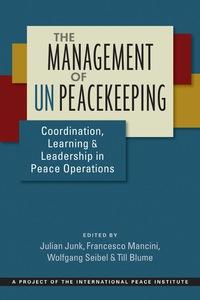Answered step by step
Verified Expert Solution
Question
1 Approved Answer
This is for the CUNY course PUBH614 On October 29, 2012, a 12-ft storm surge generated by Hurricane Sandy necessitated evacuation and temporary closure of

This is for the CUNY course PUBH614
On October 29, 2012, a 12-ft storm surge generated by Hurricane Sandy necessitated evacuation and temporary closure of three New York City hospitals including NYU Langone Medical Center (NYULMC). NYULMC nurses participated in the evacuation, and 71 \% were subsequently deployed to area hospitals to address patient surge for periods from a few days up to 2 months when NYULMC reopened.This mixed methods study explored nurses' experience in the immediate disaster and the subsequent deployment. More than 50 \% of deployed nurse participants reported the experience to be extremely or very stressful. Deployed nurses encountered practice challenges related to working in an unfamiliar environment, limited orientation, legal concerns about clinical assignments. They experienced psychosocial challenges associated with the intense experience of the evacuation, uncertainty about future employment, and the increased demands of managing the deployment. Findings provide data to inform national and regional policies to support nurses in future deployments. METHODS Qualitative Interviews. Sample and Recruitment. We recruited a purposive sample of 20 nurses reflecting the diversity of practice areas, nursing experience, and organizational role in the disaster. Nurses were contacted by the research team via text, email, or phone and invited to participate in a 1-h qualitative interview to explore their experiences during and after Hurricane Sandy. Among those nurses contacted, 16 out of 20 agreed to participate (response rate 80% ), 12 held staff nurse positions, and four held management positions. Interviews were conducted from April to June 2013 in a private setting by experienced qualitative interviewers. Participants were assured that no individual identifiers would be collected, the interview would be audiotaped to insure the accuracy of the data, and immediately after the transcription of the interview, the audiotape would be destroyed. In addition, participants were given an information sheet describing the study and contact information for the Principal Investigator and the Institutional Review Board.Measures. We drew on the extant disaster literature and information from a small group of nurses with disaster experience to inform the development of the qualitative interview guide. The guide explored prior disaster experience and training, communication and experience during the evacuation and deployment,and subsequent challenges and experiences in the recovery period. Quantitative Survey. Data for the cross-sectional study were collected using an internet-based survey from July to September 2013 . The survey was conducted after the qualitative interviews had been analyzed to inform the survey content.Sample and Recruitment. The population of interest was all registered nurses (RNs)( n=1,668) who were employed by NYULMC and worked on inpatient units on October 29,2013 . We included all nurses even if they were not on site during the evacuation. Nurses were recruited via email using procedures described below.Measures. We collected information on sociodemographic factors, disaster preparedness prior to the evacuation, perceptions of their disaster response and recovery experience, the impact of the storm on their home life, and their experience with deployment to other area hospitals. DISCUSSION (first paragraph) We explored the challenges NYULMC nurses experienced and the resources that supported them during their deployment to other area hospitals. The study has great significance regionally and nationally for complex hospital environments that are vulnerable to disaster-related events such as these. Findings provide data to inform policies to facilitate effective disaster response in the future that would support skilled nurses to participate in deployment in a meaningful way.The vast majority of nurses that completed the survey reported significant stress related to their deployment to other area hospitals following the evacuation.Qualitative data provided critical contextual information about that experience.Many of the challenges nurses identified related to their practice. Among them were working in an unfamiliar environment with limited orientation and their legal status to practice uncertain to them and to the host hospital. Lack of consistency in patient assignments, work schedules, and patient assignment load were additional challenges identified. WO required questions to answer: This is just another reminder to please only use the material (lecture slides/audios, readings, and assignments) shared with you in this course to answer this and all other uuestions, otherwise I will be unable to give you full credit or any credit. Many outside resources, regardless of how seemingly reliable they may be, may be inaccurate and/or lifferent than the way this program is carefully teaching you these concepts.) art 1: Which of the three mixed methods strategies, that were discussed in our lectures, does this study most strongly suggest? art 2: In 1-2 sentences, explain why you selected this strategy in terms of this study's detailsStep by Step Solution
There are 3 Steps involved in it
Step: 1

Get Instant Access to Expert-Tailored Solutions
See step-by-step solutions with expert insights and AI powered tools for academic success
Step: 2

Step: 3

Ace Your Homework with AI
Get the answers you need in no time with our AI-driven, step-by-step assistance
Get Started


